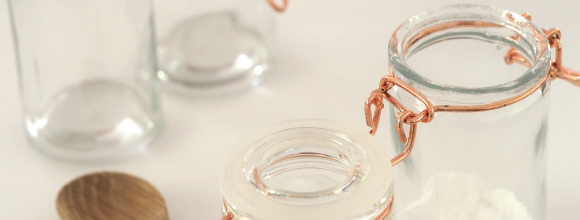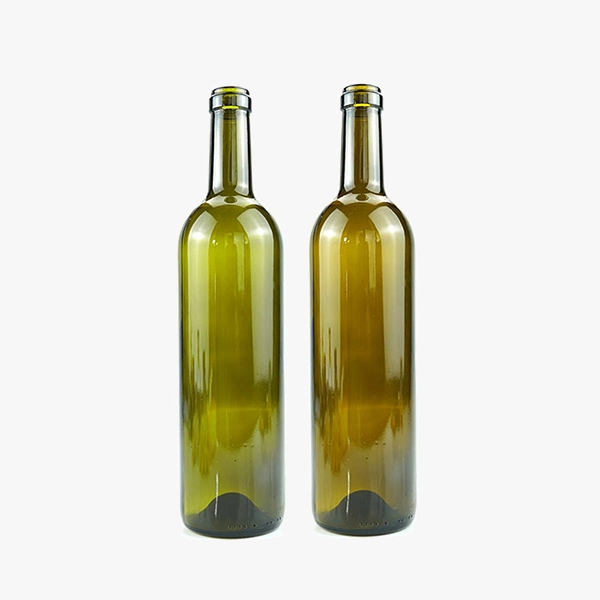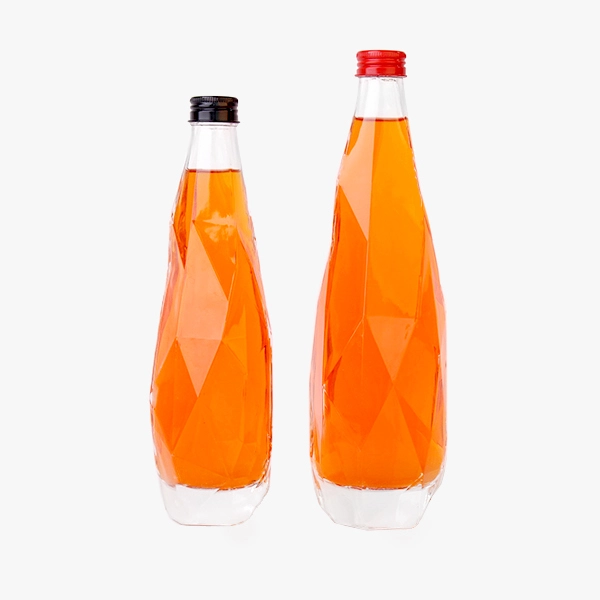Different Sizes of Whiskey Bottles
Whisky containers have evolved from wooden casks to today’s modern glass bottles, with different types of bottles offering economic and environmental benefits for a variety of uses and consumer needs. This article looks at the benefits and uses of different types of whisky bottles.
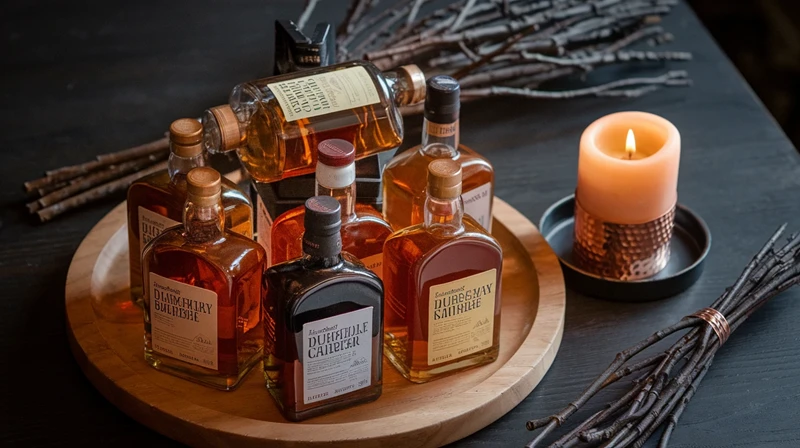
A History Of Whiskey Containers
The history of whiskey containers has evolved through technology, culture, and consumption habits. Originally, whiskey was probably stored in clay jars from ancient civilizations.
During the Middle Ages, wooden barrels became the primary storage and shipping container because the interaction of oak and whiskey improved its flavor.
By the 17th century, as glass-making technology advanced, glass bottles began to be used to hold whiskey, a trend that became standardized and popularized after the Industrial Revolution.
The advent of plastic and metal containers in the 20th century provided more options for whiskey, although they were less suitable for long-term storage. Sustainable packaging has become increasingly important in the whiskey industry in recent years.
What are the Common Whisky Sizes?
Different sizes of whisky bottles are available to meet different needs from daily drinking, special occasions, collecting, and gifting. Here are some common whisky bottle sizes:
- Miniature: 50ml – This is the smallest standard whiskey bottle size and is typically used for promotional giveaways, tasting events, or collections. They are allowing consumers to try different brands or styles of whiskey without purchasing an entire bottle, making it an option for those who want to explore a variety of flavors.
- Quarter: 200ml – Due to the smaller size of these bottles, they are suitable for gifting or personal tasting. It’s portable, making it easy and convenient to share when traveling or at parties.
- Pint: 375ml – This medium-sized bottle is more common in duty-free markets and small retail stores, and is suitable for consumers who want to try a slightly higher-end whiskey but do not want to buy a full bottle.
- Standard Bottle: 750ml – This type of bottle is the most common whiskey bottle size and is the default standard bottle size for liquor retail stores in many countries. It’s large enough to be shared by multiple people, perfect for family gatherings or spending quality time with friends.
- Liter bottle (Liter): 1000ml – common in Europe, holds approximately 33% more than standard bottles, thus providing better value. It is commonly found in duty-free shops and large retail markets and is suitable for consumers who buy frequently or want more whiskey.
- Magnum: 1500ml – Generally used for special editions or high-end whiskey collections, this large-capacity bottle is suitable for major celebrations or as a precious gift. It not only demonstrates the quality of whiskey but also reflects the gift of whiskey.
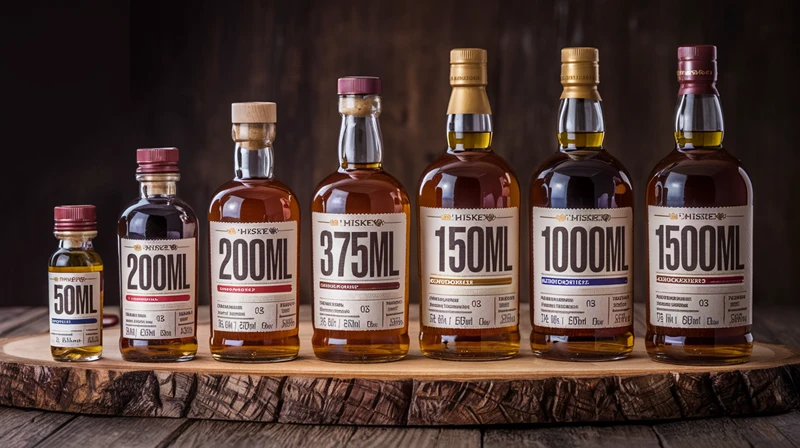
The Benefits of Going Beyond Standard-Sized Bottles
Whisky bottles that go beyond standard sizes can offer multiple benefits to consumers and producers, such as economic, environmental, social, and experiential. Here are some of the key advantages:
- Cost-effectiveness: Larger bottles, such as liters or magnums, generally offer better value for money. They can reduce the cost per unit of wine for the consumer. Producers also benefit from lower packaging and distribution costs per unit of volume sold.
- Reduced environmental impact: The larger the bottle, the less overall packaging per unit volume of whisky, reducing the environmental footprint associated with production and waste. This contributes to sustainable consumption habits and is in line with the growing consumer preference for eco-friendly products.
- Enhancing the social experience: Larger bottles are the choice for social gatherings, parties, and celebrations, ensuring that there is plenty of whisky to entertain all guests. They also add a sense of occasion to the event.
- Longevity and preservation: The smaller surface area of a bottle relative to its liquid volume means that larger bottles of whisky are likely to oxidize more slowly when opened. This has the potential to preserve the quality of the whisky for a longer period, making larger bottles more suitable for consumers who are occasional drinkers but like to collect.
- Collectability and gift appeal: Whiskies in magnums or non-standard bottles are produced in limited quantities and are therefore collectible. In addition, their size and unique, luxurious packaging make impressive gifts.
- Diversification of producers: Offering a variety of bottle types allows producers to cater to different market segments, from casual drinkers to collectors and large consumers. Diversification can help brands stand out in a competitive marketplace and appeal to a broader customer base.
- Marketing and branding opportunities: Unique large bottle sizes can increase brand awareness and appeal. They are often used in marketing campaigns to create a strong visual impact and reinforce a brand’s premium or exclusive image.
Choosing a larger or non-standard bottle size can enhance the consumer experience, deliver economic and environmental benefits, and provide producers with a strategic advantage in the spirits market.
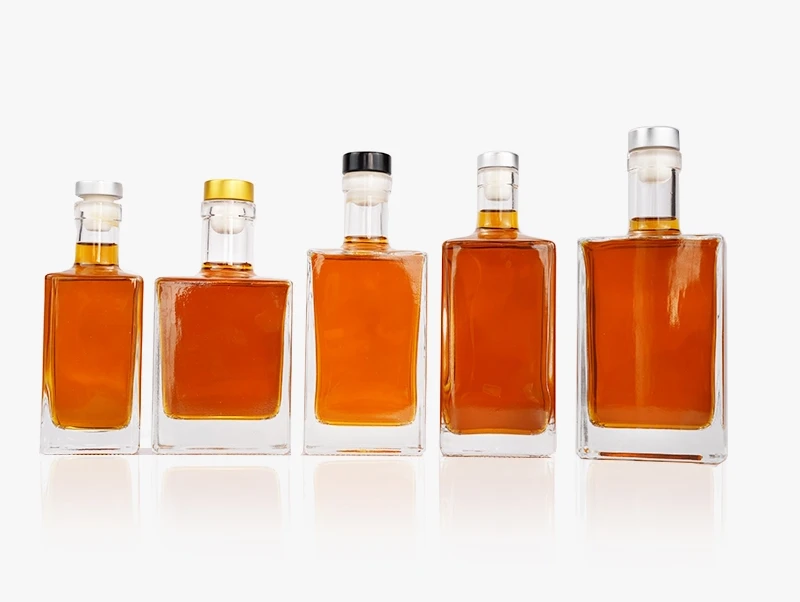
Commonly Asked Questions About Different Sizes of Whiskey Bottles
Here are some frequently asked questions about the different sizes of whisky bottles, so that we can understand their uses, advantages, and usage:
- How big is a fifth of whiskey?
A fifth of a bottle of whisky has a capacity of 750 ml, which is approximately 25.4 US ounces. It is almost equivalent to one-fifth of a US gallon, hence the name of the bottle. These bottles are ideal for social gatherings, allowing for multiple servings without being oversized. It is the perfect choice for consumers who want a modest amount of whiskey that is both convenient and modest.
- What is a 1.75-liter bottle called?
A 1.75 liter bottle is often referred to as a “handle,” an easy-to-pour handle with a capacity close to 59.2 US ounces. This type of bottle is ideal for parties or frequent consumers who like to buy larger quantities of wine at a better price per ounce. The handle on the bottle is also easy to drink from and is suitable when hosting larger groups.
- What is the difference between a pint and a fifth?
A pint of whisky usually has a capacity of 473 ml (16 oz), whereas a fifth of whisky has a capacity of 750 ml (25.4 oz). A fifth is therefore 58% larger. For whisky enthusiasts who like to share a few drinks with friends, a fifth of whisky provides more servings per bottle, making it a more practical choice for entertaining guests. Conversely, a pint of whisky is more suited to individual drinking or small gatherings, providing smaller portions without the need to take on a larger volume.
- Why do bottle sizes vary internationally?
Bottle sizes vary internationally because local regulations and standard measurements differ. Countries may use the metric or imperial system, which affects the volume units used for bottle size. Also, market preferences and history in different regions play an important role. For example, the United States may use ounces to describe bottle size, while European countries use milliliters. This difference affects the production, labeling, and import/export of whiskey, among other things.
Summary
Through the content of the above article, we can understand the various sizes of whisky bottles, different sizes of whisky bottles can enhance the drinking experience, ensure the practicality of storage and handling, meet the needs of different markets, and reflect the tradition and innovation of whisky packaging.

